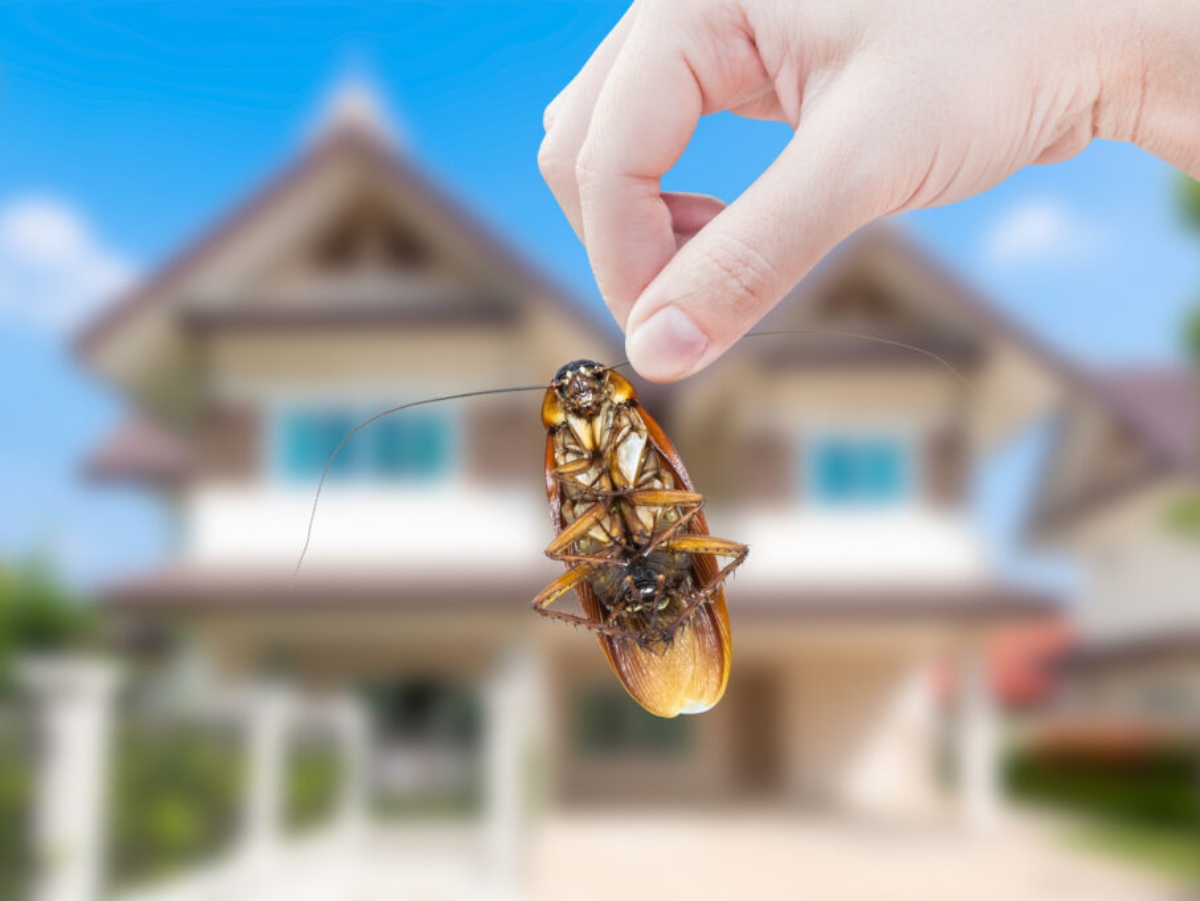Warmer summer weather is on the horizon and so are those pesky house bugs. It’s been a long winter, they are looking for food, water, or even a small amount of relief from the extreme heat of the outdoors, which might include your home. Let’s look into the most common summer house bugs that can invade your home.
The Mosquito
Mosquitoes are the most common summer house bugs. They are also considered the most dangerous due to the diseases they can carry: West Nile and Zika Virus. No matter what geographic location you are in (except maybe the Arctic), you will find mosquitos. There is a high population during the hot humid summer months, which provides the perfect environment for these summer pests to feed, breed, and lay their eggs.
Mosquitoes look for blood so they like to search for tiny cracks in your house to enter. Repairing any holes or gaps in screens, adding seals to all doors and windows, and keeping garage doors closed are some effective mosquito prevention strategies.

Ants
These summertime pests such as pavement, sugar, and carpenter ants, can get inside a house through the smallest gasp. Recognizing the most common ant species that can help in prevention when dealing with these buggy pests.
Carpenter Ants
These ants are as small as a quarter inch or as big as an inch. Usually, they construct their nests out of rotting or wet wood. They may result in damage to door frames, moldings, and walls.
Little Black Ants
Black ants. They are simple to notice, but it is challenging to pinpoint their source.
Sugar Ants
Sugar ants are typically found in kitchens because they enjoy dishes high in carbohydrates, proteins, and fats. So, they frequently show up unannounced to summer cookouts. Because sugar ants have powerful odor receptors, even small quantities of food can draw them in, even after you clean your kitchen.
Pavement Ants
Resemble sugar ants in appearance, but because they form colonies, they behave more like black ants. They and their colonies are found around:
- Driveway edges
- Cracks in sidewalks
- Underneath brick or stone patios
- Below mulching and soil
- Below rocks and other landscaping features
- Deep inside the soil
Thus, it is easy for them to find their way inside your home.
Wasps
Drawn out by warmer temperatures, there are 30,000 or so different species of wasps. Wasps normally range in length from half an inch to 1.5 inches, have two sets of wings, and have a distinct, pinched waist. They can be striped, dark red, or brown in color. Sometimes even a metallic green, or blue in hue. They build their nests in eaves, gutters, attics, and soffits, as well as eating areas, patios, pools, and playground equipment, and are very defensive if irritated. Wasps can sting multiple times, making them more likely to cause an allergic reaction.
Hornets
In the United States, there are two species of hornet. European hornets, which have long yellow bodies with brown-striped abdomens and reddish-brown faces, and bald-faced hornets, which resemble yellow jackets but are larger and have white patterns on their faces, thorax, and abdomen.
The European hornet can be active both during the day and at night, which makes hornets very bothersome. Both species are capable of repeated stings, although the stingers of European hornets take longer to detach. If they feel threatened, hornets are also known to become highly aggressive. Hornets can injure your yard’s vegetation by getting sap from trees and scratching them, which results in obvious property damage.
Yellowjackets
Yellowjackets are another common summer house pest that can chew through your drywall and enter your home. Because they are black and yellow, yellow jackets often get confused for bees, but they are a different kind of stinging insect.
Yellow jackets are smaller and thinner than bees and belong to the wasp family. They are scavengers and devour sweet foods and meats. Yellow jacket nests differ from bee nests too in that they are formed like balls, with a surface that resembles paper with an entrance hole at the bottom. Up to 15,000 yellow jackets can be housed in each of their nests, which can be constructed above or below ground. Yellow jackets will sting to defend themselves and, like their other wasp family members, they can sting a person more than once.
Carpenter Bees
During the summer, if you notice a bee flying near roofs or beneath a porch, it’s probably a carpenter bee. They feature a black tail part, yellow faces for males, and black faces for females. The term “carpenter bee” refers to a particular species that constructs its nests out of wood or other structural lumber. In addition to nesting in buildings, they can do so in sheds and homes. They can build tunnels and nests in the same piece of wood, weakening it and exposing it to fungus or other insects, such as carpenter ants.
Flies
The king of the most common summer house bugs is the fly. Files hang around where food can ferment and decay, so our left-out food, pet food, and trash are ideal nourishment for the fly, making them feel right at home in your home.
Fleas
Your pets like the sunshine too, but whether your pets spend their time indoors or outside, these insects will inevitably find their way into your house. Once an infestation begins, it is incredibly difficult to get rid of these pests. Monthly flea treatment for your pet can help eliminate chances of infestation.
Termites
In the spring, termites swarm, but during the summer, they never stop feeding. The colony’s queen can produce almost 30,000 eggs every day! That amounts to a staggering 210,000 eggs in just one week! Now, imagine if they decided to dine at your place. Each year, termites cause property damage worth billions of dollars. They hurt the stability of your house’s structure and will result in costly damage.
Ticks
As we spend long hours outside, ticks are another summer pest for you and your pet. These bugs are very prevalent outdoors throughout the summer. Because we are often outside more in the summer months, humans and their dogs are more vulnerable to them. They have a history of spreading diseases. So if you’re going to be outside for a while, make sure you’re well-covered and use insect repellent and maintain your grass regularly to help prevent these pests from invading.
Southern Bugs
Ever wonder why the South has more and bigger bugs than the Northern states? The warmer climate in the south/southeast US allows bugs to reproduce continuously. The South’s winters rarely have cold enough weather to cause the eggs, larvae, pupae, or adults to perish. Here are some of the most common summer house bugs in the south you might not find in the Northern states.
Palmetto Bugs
These are found a lot during the summer months, especially after fresh rain in the southern region. The palmetto bug is basically a type of cockroach. These nocturnal bugs prefer to move fast around different sections of your home at night, especially when you least expect them because they thrive in dark, warm, moist environments. Fitting through any crack or crevice, these bugs invade your home in search of its daily requirements for food, water, and a place to live.
Chiggers
Another pest that is familiar in the summer south is chiggers. They like the outdoors, especially in shady places that may also have overgrown grass and other vegetation, so it’s important to maintain your lawn to avoid inviting them around your home.

Spiders
Spiders are another pest that likes to come out and frolic in the summertime, especially in the south. Black Widows and Brown Recluses are the most important things to look out for.
Black Widow Spiders
Recognized by the red hourglass pattern on their backs. Contrary to what many people think, these spiders rarely cause fatalities. In actuality, they only nip at people when surprised or frightened. Additionally, those who have been bitten by a black widow do not always seek medical attention.
Brown Recluse Spiders
On the other hand, Brown Recluse Spiders are more hazardous than Black Widow Spiders. Like Black Widows, they are not hostile but will bite if threatened. Brown Recluse bites are more dangerous, but you won’t notice till six to eight hours after feeling the bite.



